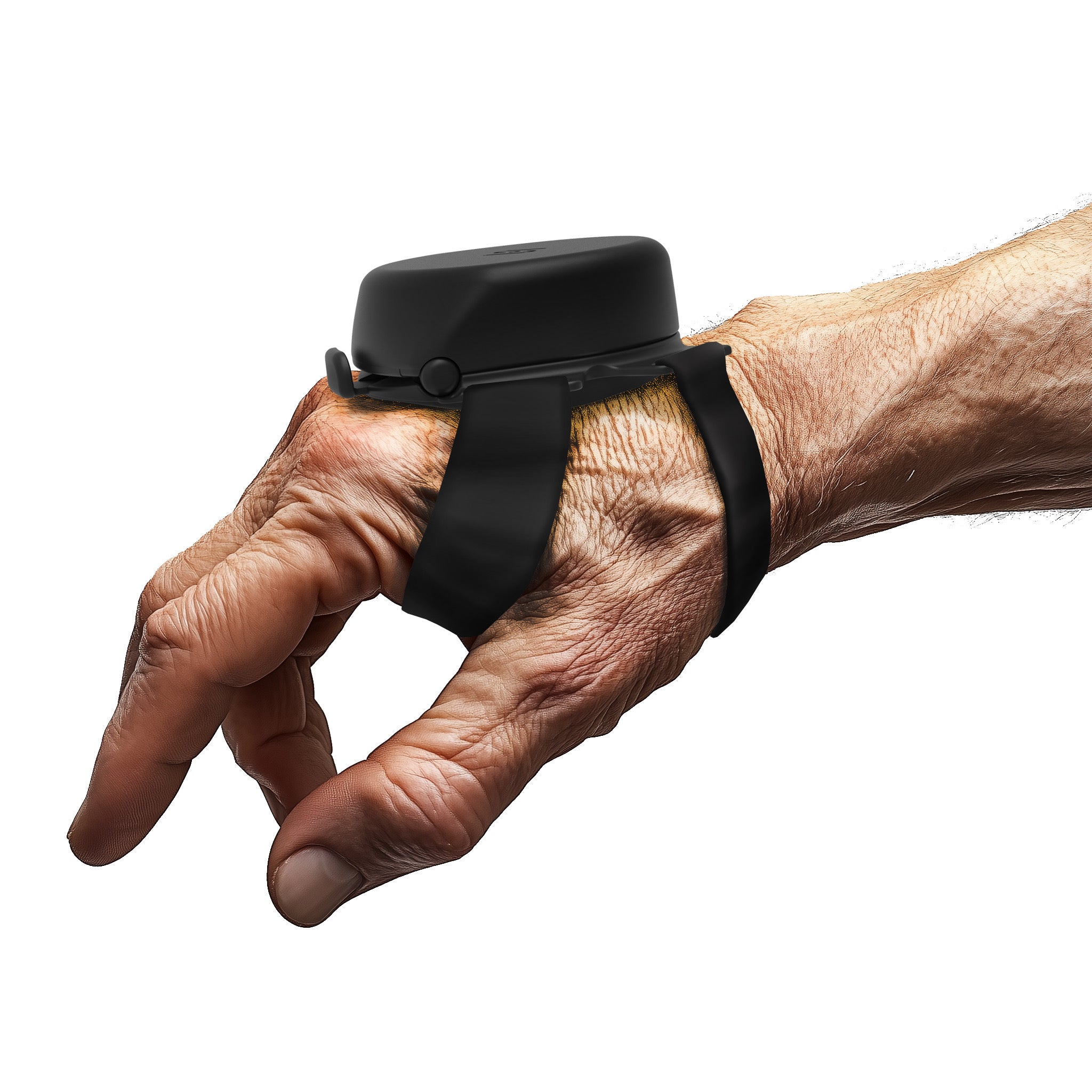For millions of people around the world, Essential Tremor (ET) isn’t just a small shake of the hands — it’s a condition that can slowly change how they eat, write, drink, or perform everyday tasks. While often confused with Parkinson’s Disease, Essential Tremor is a distinct neurological disorder that causes rhythmic, involuntary shaking, most commonly in the hands, head, or voice.
Understanding how Essential Tremor progresses — and whether it follows “stages” — is one of the most common questions among those newly diagnosed. Many people want to know: Does Essential Tremor get worse? How fast does Essential Tremor progress? Are there stages like in Parkinson’s Disease?
This article explores the progression of Essential Tremor in depth, using evidence from clinical research, neurology experts, and movement disorder specialists. You’ll also learn about functional “stages” identified by researchers, what influences how fast ET progresses, and modern ways to manage tremor effectively — including medically approved assistive devices like Steadiwear’s Steadi-3.
What Is Essential Tremor?
Essential Tremor (ET) is a neurological movement disorder characterized by involuntary, rhythmic shaking — most often of the hands and arms, though it can also affect the head, voice, or other body parts. It’s considered the most common movement disorder in adults, affecting about 4% of people over age 40 according to the Paris Brain Institute.
ET is typically classified as an action or postural tremor — it occurs during movement or when maintaining a posture, unlike the resting tremor associated with Parkinson’s Disease.
Key characteristics:
-
Usually bilateral (both hands or arms)
-
Becomes more noticeable with fine motor tasks such as writing, using utensils, or drinking
-
May spread gradually to the head or voice over time
-
Tremor lessens at rest but increases with movement or stress
While its precise cause isn’t fully understood, ET is believed to involve abnormal electrical activity in the cerebellum — the part of the brain that controls coordination. Genetics play a strong role: 50–70% of cases are hereditary, often showing autosomal dominant inheritance patterns.
How Does Essential Tremor Progress?
Progressive, but Variable
Essential Tremor is a progressive condition, meaning it can worsen over time — though not at a uniform rate for everyone. The speed and extent of progression vary based on factors such as:
-
Age of onset
-
Genetic background
-
Severity at diagnosis
-
Lifestyle and environmental factors
A landmark study by Elan D. Louis et al. (2009), published in the Archives of Neurology (PMCID: PMC2736358), found that people who develop ET later in life tend to experience a faster rate of progression than those with earlier onset. The researchers observed that older-onset ET cases also showed more degenerative changes in the cerebellum — particularly loss and structural changes in Purkinje cells, which play a key role in motor coordination.
The Functional “Stages” of Essential Tremor
Although ET doesn’t have formalized medical stages like Parkinson’s Disease, a Spanish research team proposed a simple, practical scale known as the Glass Scale (as discussed by Sperling Medical Group). This model defines four functional stages based on how tremor interferes with daily life — specifically, the ability to drink water from a glass.
|
Glass Scale Stage |
Description |
Typical Functional Change |
|
Stage I |
Tremor first appears in one or both arms. |
Mild shaking noticed during precise movements. |
|
Stage II |
Tremor worsens, drinking with one hand becomes difficult. |
Spilling begins to occur; tremor becomes visible to others. |
|
Stage III |
Requires both hands to hold a glass steadily. |
Clear functional impairment in daily tasks. |
|
Stage IV |
Must drink through a straw. |
Severe tremor; fine motor independence significantly reduced. |
These stages don’t represent fixed medical phases, but they help doctors and patients monitor practical changes over time.
Factors Influencing the Rate of Progression

The progression of Essential Tremor varies considerably from one person to another. Several factors can influence how fast ET symptoms develop or worsen:
1. Age at Onset
Studies show that younger onset (under age 40) often corresponds to slower progression, while older onset cases (above 60) tend to worsen more quickly. This correlation was confirmed in both the 2009 Louis et al. study and subsequent neuropathological research linking degenerative cerebellar changes to older onset.
2. Genetic and Familial Influence
A 2012 study published in Neuroepidemiology (“Does rate of progression run in Essential Tremor families?”) found that progression rates may cluster within families, suggesting a genetic influence not only on susceptibility but also on how fast symptoms advance. Some families show consistently mild tremors across generations, while others experience more rapid deterioration.
3. Neurological and Structural Factors
Neuroimaging and pathology studies suggest cerebellar involvement plays a major role. ET patients may exhibit structural abnormalities in Purkinje cells and their axons (“torpedoes”), which contribute to worsening motor control.
4. Environmental and Lifestyle Factors
Caffeine, stress, and fatigue can temporarily worsen tremor intensity but don’t directly accelerate disease progression. However, certain medications or toxin exposures may aggravate symptoms.
5. Duration of Condition
The longer the tremor has been present, the more likely it is to spread to new regions (such as the head or voice). Some patients report new areas of involvement after 10–20 years.
The Timeline of Essential Tremor Progression
While no two cases are identical, studies and clinical experience help outline a general timeline of progression:
|
Approximate Timeline |
Typical Clinical Features |
Functional Impact |
|
Early Stage (0–5 years) |
Mild hand tremor during activity; little to no interference with daily life. |
The patient may notice shaking when holding objects or writing. |
|
Intermediate Stage (5–15 years) |
Tremor amplitude increases; affects both hands; begins to impact tasks like eating, shaving, or applying makeup. |
Visible tremor leads to self-consciousness or adaptation (e.g., using two hands). |
|
Advanced Stage (15 + years) |
Tremor extends to head or voice; may cause functional limitations; psychological effects such as frustration or social withdrawal. |
The patient may rely on assistive devices or modified utensils. |
A study cited by the Paris Brain Institute emphasizes that ET is not a degenerative condition in the same sense as Parkinson’s — meaning it doesn’t necessarily lead to disability or cognitive decline. Instead, the functional burden increases as tremor intensity and spread progress gradually over decades.
Essential Tremor vs. Parkinson’s Disease Progression

Many individuals initially worry that Essential Tremor will “turn into” Parkinson’s Disease. However, these are distinct conditions.
|
Characteristic |
Essential Tremor (ET) |
Parkinson’s Disease (PD) |
|
Type of tremor |
Action or postural (appears during movement). |
Resting tremor (visible when at rest). |
|
Progression |
Gradual, variable, usually non-degenerative. |
Progressive neurodegenerative with defined stages. |
|
Cause |
Dysfunction in cerebellar circuits. |
Loss of dopamine-producing neurons in the substantia nigra. |
|
Other symptoms |
No muscle stiffness or bradykinesia. |
Muscle rigidity, slowness, balance issues. |
|
Treatment goal |
Manage tremor intensity and maintain function. |
Slow neurodegeneration and manage symptoms. |
While both conditions are progressive, ET’s progression typically involves increasing tremor severity and spread — not the motor and non-motor decline seen in PD.
Monitoring and Managing Essential Tremor Over Time
Regular Evaluation
Since Essential Tremor can change gradually, tracking functional ability is vital. Neurologists often recommend annual assessments focusing on:
-
Tremor intensity and spread
-
Ability to perform fine motor tasks
-
Medication response
-
Emotional and psychological wellbeing
Scales like the Glass Scale or the TETRAS (The Essential Tremor Rating Assessment Scale) are sometimes used to track progression.
Management and Coping
Although there is currently no cure for Essential Tremor, several evidence-based management strategies can help patients maintain control and independence:
-
Medication: Propranolol and primidone are common first-line treatments.
-
Botulinum toxin injections: Used selectively for head or voice tremor.
-
Deep Brain Stimulation (DBS): For severe cases resistant to medication.
-
Assistive devices: Wearable stabilizing technologies offer non-invasive alternatives for tremor control.
Modern Solutions: How Steadi-3 Supports Tremor Management
For individuals living with hand tremors, assistive technology can dramatically improve daily independence. One such innovation is Steadiwear’s Steadi-3, a Class I medical device designed specifically for tremor management.
About Steadi-3
The Steadi-3 is an advanced, non-invasive, battery-free stabilizing glove that uses smart mechanical damping technology to reduce hand tremors in real time. Developed through clinical research in biomechanics, it helps users regain control over tasks such as:
-
Drinking from a glass
-
Writing
-
Using utensils
-
Typing or smartphone interaction
Key Benefits:
-
Passive control: No charging or electronics — the glove self-adjusts naturally.
-
Immediate stabilization: Reduces tremor amplitude during movement.
-
Discreet and comfortable: Lightweight design for everyday use.
-
Scientifically validated: Developed in collaboration with healthcare professionals and engineers.
-
Empowers independence: Helps maintain confidence in daily activities.
Steadiwear’s mission is rooted in engineering solutions that promote control and independence — never making claims of cure, but helping individuals manage symptoms safely and effectively.
To learn more about Steadi-3 and explore user experiences
The Importance of Clinical and Professional Guidance
Every person with Essential Tremor experiences a unique trajectory. Consulting a movement disorder specialist ensures proper diagnosis and customized treatment. Tremor progression should be monitored through regular neurological exams, and patients should discuss any changes in tremor frequency, severity, or function with their healthcare provider.
Professionals can:
-
Adjust medication dosages
-
Recommend adaptive devices or physical therapy
-
Evaluate candidacy for DBS or other interventions
-
Provide mental health resources to address anxiety or social withdrawal related to tremor visibility
Living Well with Essential Tremor
While Essential Tremor stages can indicate increasing impact on daily life, progression does not mean loss of independence. Many individuals live active, fulfilling lives for decades after diagnosis. With early management, ergonomic tools, and assistive devices, it’s possible to maintain control and confidence — both physically and emotionally.
By focusing on functional adaptation, rather than fearing progression, individuals can reclaim autonomy and stability.



